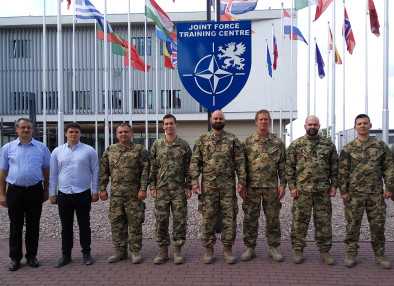Exercise along the Amber Road
Szöveg: Captain Imre Szilágyi | 2018. július 2. 20:07In June again the town of Bydgoszcz, Northern Poland became the capital of informatics for three weeks. Endorsed by NATO North Atlantic Council and directed by the Military Committee, organised by NATO ACT, the No.1 computer information systems interoperability exercise, the NATO CWIX (Coalition Warrior Interoperability eXploration, eXperimentation, eXamination eXercise) was staged now for the 24th time. The exercise this time was hosted by NATO Joint Force Training Centre.
Thirty four nations – among them Hungary –, and several international organisations were represented in the exercise, with about 1300 participants. These figures can be considered as absolute records in the CWIX history, showing that interoperability has become increasingly important for the nations.
The Hungarian delegation comprised the experts of the HDF 43rd ‘Nagysándor József’ Signal and Command Support Regiment, the HDF 54th Veszprém Radar Regiment, the National University of Public Service, Faculty of Military Science and Officer Training, MoD EI Zrt. and the Artifex Kft. The systems tested during the exercise spanned the full communication and information systems capabilities (CIS) spectrum; demonstrating the capabilities currently used, to be introduced, together with those under development or yet at the experimental stage.
In the exercise present were the land, air, and navy command and control systems, the cyber defence technologies, the logistics, the simulation, the geoinformation and meteorological systems, as well as the reconnaissance capabilities, and the different tactical data links.

The NATO CWIX strives to make the Communication and Information Systems (CIS) operational capabilities more resilient and resistant by improving the technical, procedural, human interoperability in the interest of the more effective co-operation of NATO and its partner states. The higher level interoperability supports military decision-making by accelerating the flow of information, facilitates the assessment of situations, and improves the joint operational situation.
In the modern military operations, the technical failure of the communication and information systems is unacceptable. The CWIX exercise by providing the possibility for testing the capabilities, reduces the risk of errors.
Photo of the author